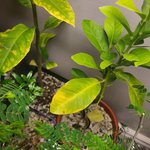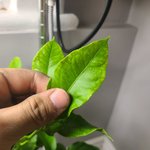LemonBonsai
Shohin
So ive been having a problem with all my citrus trees. They all are showing signs of salt toxicity. Yellow around edges of leaves, brown tips of leaves. I have tried flushing the soil out but it doesnt seem to be doing much. I know the best way to relieve this would be to change the soil, however since it is winter I need to wait until spring to repot them, as of now im stuck and wondering if theres any tips anybody has to fix this issue. Is there something I could add to the top of the soil and water into the pot that would help? Or is my only option to keep flushing, get through winter, and repot into a soil that has more compost in it. By the way my soil composition is about 1:1 ratio of sifted perlite and oil dry, with about 15-20% of potting soil.
Thanks!
Thanks!




